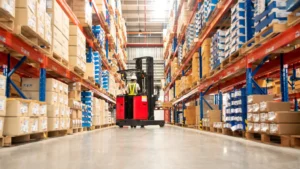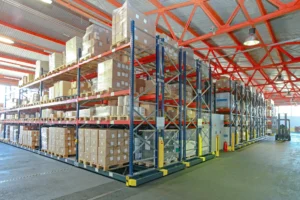
Material handling is pivotal in various industries, influencing efficiency and workplace safety. An often-overlooked aspect of this process is material handling design, which includes the planning, layout, and implementing systems to move, store, and control materials. This blog will delve into the critical elements of material handling, exploring how a well-thought-out approach can significantly impact operational success.
The Foundation of Efficiency – Systematic Layout Planning and Material Handling Design
Systematic layout planning is the bedrock of an effective material handling plan. It strategically organizes workspaces, storage areas, and transportation routes to minimize unnecessary movements and streamline processes. A well-designed layout reduces travel distances and improves workflow, leading to increased productivity.
To achieve this, designers must consider the type of materials being handled, the frequency of movement, and the specific requirements of each operation. In a manufacturing setting, for instance, raw materials may need to flow seamlessly through various stages of production, requiring a layout that minimizes bottlenecks and congestion points.
Customization for Success with a Material Handling Design
No two industries are identical, and material handling systems must be customized to meet the unique needs of each. This involves selecting or designing equipment that aligns with the characteristics of the material handling, the available space, and the desired efficiency levels.
For example, one can employ automated guided vehicles (AGVs) in a warehouse setting to move goods from one point to another efficiently. These AGVs can be programmed to follow predetermined routes, reducing the need for manual labor and minimizing the risk of errors.
Additionally, incorporating advanced technologies such as sensors and RFID systems can increase the accuracy and speed of material tracking, providing real-time data for inventory management and order fulfillment.
Ergonomic Considerations in Material Handling
While efficiency is a top priority, material handling design must also prioritize the safety and well-being of workers. Ergonomics plays a vital role in achieving this balance. Designers should focus on creating work environments that reduce physical strain, lessen the risk of injuries, and promote overall worker well-being.
Ergonomically designed workstations, adjustable lifting equipment, and employee training programs can create a safer and more comfortable working environment. Considering the physical demands placed on workers during material handling activities, attention to ergonomic details can significantly reduce workplace injuries and associated costs.
Key Principles of Material Handling
System Integration
Successful material handling strategy begins with a holistic approach to system integration. It involves aligning components such as conveyors, robots, storage systems, and control software into a cohesive unit. The interaction between these elements ensures a streamlined material flow. Thus, minimizing bottlenecks and maximizing productivity.
Flexibility and Scalability
In the dynamic landscape of modern industries, adaptability is key. Material handling should be flexible enough to accommodate changes in production volumes, product types, and process flows. Scalability ensures that the system can grow or contract as the business evolves, preventing the need for frequent overhauls.
Factors Influencing Material Handling
Type of Material
The nature of the materials being handled significantly influences the design. Fragile items may require specialized handling equipment, while bulk materials may necessitate conveyor systems designed for high throughput. Further, understanding the characteristics of the materials is vital for selecting the right equipment and designing appropriate storage solutions.
Space Utilization
Efficient utilization of available space is a fundamental consideration in Material handling projects. Secondly, optimize every inch, from the layout of storage racks to the path of conveyor systems. This maximizes storage capacity and minimizes the travel time for materials, improving overall efficiency.
Automation and Technology
The integration of automation and advanced technologies is transforming material handling. Robotics, artificial intelligence, and data analytics can create smart and adaptive systems. For instance, automated guided vehicles (AGVs) and robotic arms increase precision and speed in material handling processes.
Conclusion
In conclusion, material handling design is the linchpin for improving efficiency and safety in various industries. Secondly, by implementing systematic layout planning, tailoring equipment to specific needs, and prioritizing ergonomic considerations, organizations can create a workplace that improves productivity and safeguards the well-being of their workforce. For more information, contact us now or hire our experts to handle everything at affordable prices.












